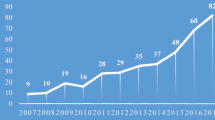Abstract
Developed by the World Economic Forum in collaboration with Accenture, the energy architecture performance index is constructed by means of calculating the arithmetic average of economic growth and development, environmental sustainability and energy access and security. However, this scheme is highly affected by the extreme values, not the Pareto optimal, and loses association with weights. This paper addresses these issues in terms of taking into account all possible individual preferences among the above three indicators, then aggregating them into a collective choice result. Specifically, an individual preference is characterized by an importance order of the indicators, which can be mathematically denoted by a set of ranked weights. The pessimistic and optimistic results under certain individual preference are obtained in closed form to encompass all possible weighting scenarios. An ideal point approach is employed to implement the aggregation. An empirical study with 23 emerging countries is presented to demonstrate the effectiveness of our methodology.


Similar content being viewed by others
References
Ang, B. W., Xu, X. Y., & Su, B. (2015). Multi-country comparisons of energy performance: the index decomposition analysis approach. Energy Economics, 47, 68–76.
Barron, F. H., & Barrett, B. E. (1996). Decision quality using ranked attribute weights. Management Science, 42(11), 1515–1523.
Bocca, R., & Asgraf, M. (2017). Global energy architecture performance index report 2017. World Economic Forum.
Ding, Y., Fu, Y., Lai, K. K., & Leung, W. K. J. (2018). Using ranked weights and acceptability analysis to construct composite indicators: A case study of regional sustainable society index. Social Indicators Research, 139(3), 871–885.
Fieller, E. C., Hartley, H. O., & Pearson, E. S. (1957). Tests for rank correlation coefficients. i. Biometrika, 44(3/4), 470–481.
Fu, Y., Lai, K. K., & Yu, L. (2021). Multi-nation comparisons of energy architecture performance: A group decision-making method with preference structure and acceptability analysis. Energy Economics, 96, 105139.
Lahdelma, R., & Salminen, P. (2001). SMAA-2: Stochastic multicriteria acceptability analysis for group decision making. Operations Research, 49(3), 444–454.
Liu, J., Chen, H., Liu, J., Li, Z., Huang, R., Xing, L., Wang, J., & Li, G. (2017). An energy performance evaluation methodology for individual office building with dynamic energy benchmarks using limited information. Applied Energy, 206, 193–205.
Liu, W., & Wang, Y-M (2018). Ranking DMUs by using the upper and lower bounds of the normalized efficiency in data envelopment analysis. Computers & Industrial Engineering, 125, 135–143.
Lyerly, S. B. (1952). The average Spearman rank correlation coefficient. Psychometrika, 17(4), 421–428.
Ma, J., Fan, Z-P, & Huang, L-H (1999). A subjective and objective integrated approach to determine attribute weights. European Journal of Operational Research, 112(2), 397–404.
Melkonyan, T., & Safra, Z. (2016). Intrinsic variability in group and individual decision making. Management Science, 62(9), 2651–2667.
Narasimhan, L., Srinivasan, K., & Sudhir, K. (2015). Marketing science in emerging markets. Marketing Science, 34(4), 473–479.
Narula, K., & Reddy, B. S. (2015). Three blind men and an elephant: The case of energy indices to measure energy security and energy sustainability. Energy, 80, 148–158.
Peng, C., Wu, X., Fu, Y., & Lai, K. K. (2017). Alternative approaches to constructing composite indicators: An application to construct a sustainable energy index for APEC economies. Operational Research, 17(3), 747–759.
Sadorsky, P. (2009). Renewable energy consumption and income in emerging economies. Energy Policy, 37(10), 4021–4028.
Sen, A. (1977). Social choice theory: A re-examination. Econometrica, 45(1), 53–88.
Sen, A. (1999). The possibility of social choice. American Economic Review, 89(3), 349–378.
Song, L., Fu, Y., Zhou, P., & Lai, K. K. (2017). Measuring national energy performance via energy trilemma index: a stochastic multicriteria acceptability analysis. Energy Economics, 66, 313–319.
Soytas, U., & Sari, R. (2003). Energy consumption and GDP: causality relationship in G-7 countries and emerging markets. Energy Economics, 25(1), 33–37.
Stempien, J. P., & Chan, S. H. (2017). Addressing energy trilemma via the modified Markowitz Mean-Variance Portfolio Optimization theory. Applied Energy, 202, 228–237.
Wang, Y.-M., & Luo, Y. (2006). DEA efficiency assessment using ideal and anti-ideal decision making units. Applied Mathematics and Computation, 173(2), 902–915.
Wang, Y-M, & Yang, J-B (2007). Measuring the performances of decision-making units using interval efficiencies. Journal of Computational and Applied Mathematics, 198(1), 253–267.
Wu, D. (2006). A note on DEA efficiency assessment using ideal point: an improvement of Wang and Luo’s model. Applied Mathematics and Computation, 183(2), 819–830.
Wu, S., Fu, Y., Shen, H., & Liu, F. (2018). Using ranked weights and Shannon entropy to modify regional sustainable society index. Sustainable Cities and Society, 41, 443–448.
Yan, C., Wang, S., Xiao, F., & Gao, D-C (2015). A multi-level energy performance diagnosis method for energy information poor buildings. Energy, 83, 189–203.
Zhang, L. P., & Zhou, P. (2018). A non-compensatory composite indicator approach to assessing low-carbon performance. European Journal of Operational Research, 270(1), 352–361.
Zhou, P., Ang, B. W., & Poh, K. L. (2007). A mathematical programming approach to constructing composite indicators. Ecological Economics, 62(2), 291–297.
Acknowledgements
The authors would like to thank the editor-inchief and the anonymous review team for helpful comments on earlier drafts of this paper. This research is financially supported by National Natural Science Foundation of China (No.71802185).
Author information
Authors and Affiliations
Corresponding authors
Ethics declarations
Competing interests
The authors declare no competing interests.
Additional information
Publisher’s note
Springer Nature remains neutral with regard to jurisdictional claims in published maps and institutional affiliations.
Rights and permissions
About this article
Cite this article
Qin, X., Huang, G., Fu, Y. et al. Using ranked weights and ideal point concept to measure energy architecture performance: an empirical study in emerging markets. Energy Efficiency 14, 80 (2021). https://doi.org/10.1007/s12053-021-09988-3
Received:
Accepted:
Published:
DOI: https://doi.org/10.1007/s12053-021-09988-3




